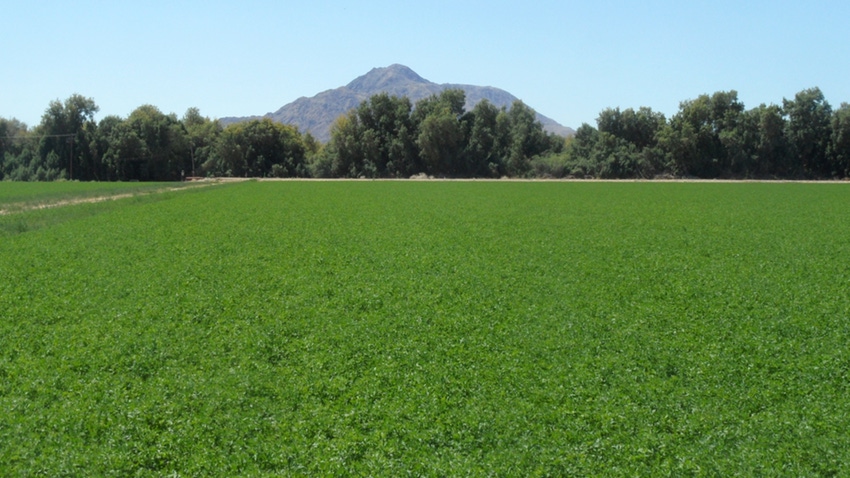April 18, 2024

The mainstream media continues its obsession with the amount of water that goes to producing alfalfa and other important forage crops in the West. The Colorado River right now is understandably a favorite topic of environmental journalists, as state, federal and tribal decision-makers are scrambling to negotiate a long-term river operating agreement to replace the current one that expires in 2026.
Those arguments were teed up again last month when the Los Angeles Times broadcast a recent study showing that agriculture is the “dominant” user of Colorado River water, “about three times the combined usage of all the cities that depend on the river”. Unfortunately, not a single Colorado River farmer or water manager was mentioned in that story.
Over the past two years, we’ve witnessed a steady stream of media coverage, essentially carrying a similar message: Growing less hay is the only way to keep the Colorado River’s water system from collapsing.
Some journalists love going after crops that use lots of water. Almond growers in California’s Central Valley were subjected to a merciless multi-year “one almond uses one gallon of water” campaign during the last “unprecedented” drought that hit the Golden State in the last decade. Guess what? Years later, Central Valley farmers still grow them because consumers around the globe love almonds and consume them in mass quantities for their great taste and dense nutritional punch.
What would seem obvious to those of us in agricultural circles is often not even mentioned in mainstream media coverage of Western water matters: water that grows farm products doesn’t stay on the farm. It becomes part of the food we eat and clothing we wear, making consumers the true end users of farm water.
From farm to table, a reliable water source sustains the food we love, ensuring affordability, variety and nutritional value for all.
From clothes to computer chips, everything requires water to produce. That cell phone in your hand required 3,190 gallons to manufacture. Cell phones and many other products come to the U.S. from other countries. Every year, the U.S. imports more than 13.3 billion acre-feet of water embedded in the products we buy from overseas.
Simplistic examinations of alfalfa in terms of water demand vs. supply must be enhanced and balanced with discussion of productivity, economic return, food production, and the environment to be truly productive.
Alfalfa is an important crop, and it is grown throughout the West for good reasons. In late 2022, our organization and California Farm Water Coalition produced a white paper titled, “Our Food Supply at Risk; The Importance of Alfalfa Production in the American West” detailing the attributes of alfalfa.
Alfalfa is a highly valuable crop, particularly in the Colorado River Basin. It offers numerous agronomic, economic, and environmental benefits.
Finding solutions to complex problems, like the Colorado River’s dwindling supplies, requires working together, not divisive attacks. Fallowing productive farmland should be a last resort when it comes to America’s food supply and the foundational inputs it needs.
[Dan Keppen is executive director of Family Farm Alliance.]
About the Author(s)
You May Also Like




